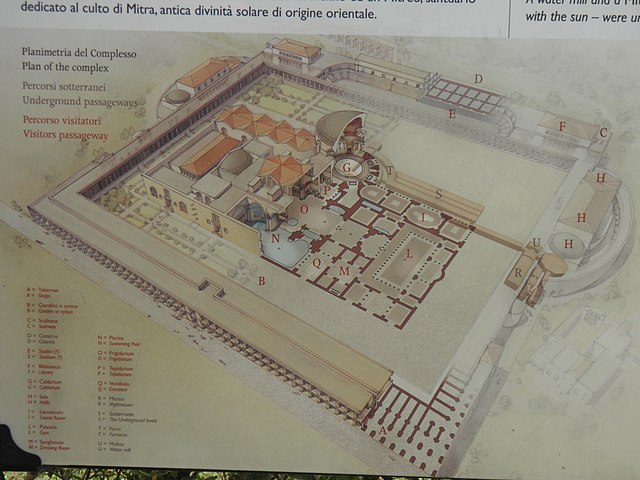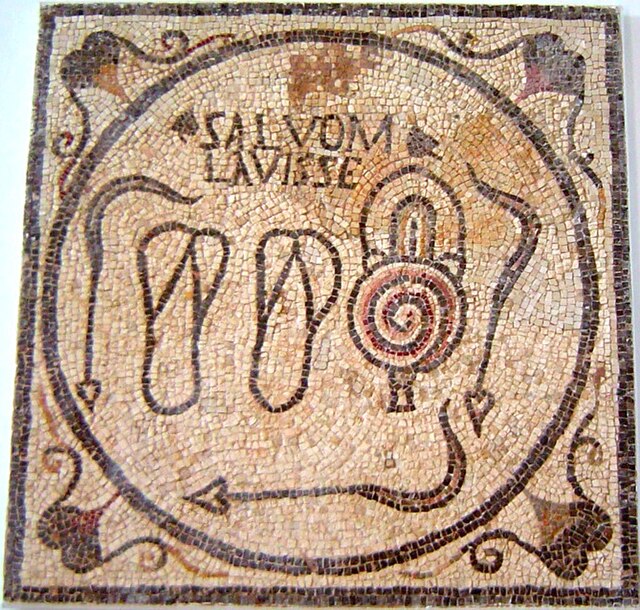The Baths of Caracalla in Rome, Italy, were the city's second largest Roman public baths, or thermae, after the Baths of Diocletian. The baths were likely built between AD 212 and 216/217, during the reigns of emperors Septimius Severus and Caracalla. They were in operation until the 530s and then fell into disuse and ruin.
The baths as viewed from the south-west. The caldarium would have been in the front of the image
Engraving of the Baths of Caracalla by Abraham-Louis-Rodolphe Ducros, ca. 1780
Fresco of Dionysus from triclinium ceiling of home incorporated into Baths of Caracalla (Rome)
Overview plan
In ancient Rome, thermae and balneae were facilities for bathing. Thermae usually refers to the large imperial bath complexes, while balneae were smaller-scale facilities, public or private, that existed in great numbers throughout Rome.
Roman public baths in Bath, England. The entire structure above the level of the pillar bases is a later reconstruction.
Bulla Regia, inside the thermal baths
Mosaic bath sign from Sabratha, Libya, showing bathing sandals, three strigils, and the slogan SALVOM LAVISSE, "A bath is good for you"
Plan of the Old Baths (Forum Baths) at Pompeii








